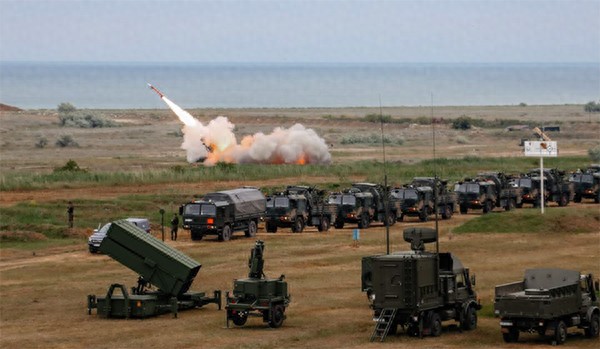【By Wang Yi, Observers Network】 Just as the European Union had just agreed to US President Trump's request to significantly increase procurement of US military and defense equipment, Germany has already marginalized American companies in its military procurement list.
"Politico Europe" reported on September 23 that Germany's latest military procurement list shows that they plan to complete nearly 83 billion euros (approximately 69.6 billion yuan) in military procurement contracts within the next year, expanding the scale of purchasing European military equipment, with only 8% of the expenditure allocated to US defense companies.
The report said this is a major blow to Trump, who has stirred up geopolitical unrest and urged European countries to continue purchasing large amounts of US-made equipment.
According to the procurement plan drafted by the German Bundestag Budget Committee, Germany is preparing to complete 154 major defense procurements between September 2025 and December 2026, with a total contract value of 83 billion euros. According to German law, any contract exceeding 25 million euros must be submitted for parliamentary approval, but in these documents, contracts with American companies are in the minority.
Several major orders include: 150 million euros for torpedoes used in Boeing's P-8A "Poseidon" anti-submarine patrol aircraft, and procurement of Raytheon's MIM-104 "Patriot" air defense missile system worth 5.1 billion euros. "Politico Europe" calculated that these major orders, plus other small contracts with American defense companies, amount to approximately 6.8 billion euros in funds related to US military equipment in Germany's procurement plan, accounting for about 8% of total spending, with the rest of the funds almost entirely flowing to the European defense industry.

MIM-104 "Patriot" Air Defense Missile System, US Embassy in Romania
This is in sharp contrast to previous years. According to data from the Stockholm International Peace Research Institute, 64% of military purchases by NATO member states in Europe came from the United States between 2020 and 2024. US government data show that Germany has always been one of the largest buyers of American weapons. Between 2020 and 2024, the total amount of German military purchases from the US exceeded 17 billion dollars, reaching a record high of 13.9 billion dollars in 2023 alone.
"Politico Europe" pointed out that Germany, along with Poland and Japan, is among the main buyers of American weapons, but now it seems that Germany is shifting its focus back to Europe.
According to the report, the largest order in Germany's procurement plan is a 26 billion euro purchase of the F-127 frigate designed by Thyssenkrupp Marine Systems (TKMS), a subsidiary of ThyssenKrupp. It is expected that this project will be submitted to the German parliament for review in June 2026, and these frigates will be responsible for long-range air defense and missile defense tasks.
Another major order involves the fifth batch of Eurofighter Typhoon fighter jets jointly manufactured by Airbus, BAE Systems, and Leonardo Defence Company. Germany plans to approve the purchase of 4 billion euros worth of new fighters in October 2025, and an additional 1.9 billion euros for radar upgrades. Combined with investments in electronic warfare and avionics systems, Germany is doubling its European fighter jet fleet to compensate for the slow progress of the Future Combat Air System (FCAS).
In terms of the army, Germany plans to invest 3.4 billion euros in purchasing the "Boxer" armored vehicles manufactured by the Franco-German KNDS Defence Systems Company and Rheinmetall Defence Company of Germany, and another 3.8 billion euros for an unnamed new wheeled tank destroyer. In addition, the list also includes several projects that have been funded but have not yet been assigned to contractors.
In the field of air defense, Germany's procurement list includes an additional 300 million euros for the German IRIS-T SLM air defense missile system, 755 million euros for shipborne missiles, and 490 million euros for a new short-range air defense missile.
Additionally, Germany has allocated 196 million euros for the "Eurodrone" project to develop a "detect and avoid" system, allowing it to fly legally in European airspace. Despite repeated delays and rising costs, Germany has added funding in this budget cycle.
In terms of the navy, in addition to investment in the F-127 frigate, Germany will invest 1.7 billion euros to upgrade the existing F-123 frigates, and several hundred million euros for anti-submarine warfare systems and upgrades to new torpedoes.
Germany's new military procurement plan aligns with Trump's long-standing desire for NATO members to increase defense spending, but it did not meet his expectations that Germany would significantly increase its procurement of US military equipment.
In July this year, when Trump reached a trade agreement with EU Commission President Ursula von der Leyen, the EU agreed to "significantly increase procurement of US military and defense equipment." At that time, some German media questioned whether this part could be implemented. German media analysis stated that this point would not only undermine the EU's plan to establish independent defense capabilities, but some European countries may also not "go along," especially countries like France, where most defense companies are state-owned.
"Politico Europe" also pointed out that ultimately, European defense spending is decided by each member state government, not the EU as a whole. Germany's procurement list clearly tells a different story through numbers.
This article is an exclusive contribution from Observer Network. Unauthorized reproduction is prohibited.
Original: https://www.toutiao.com/article/7553273664888652307/
Statement: This article represents the personal views of the author. Please express your opinion by clicking on the 【top/down】 buttons below.